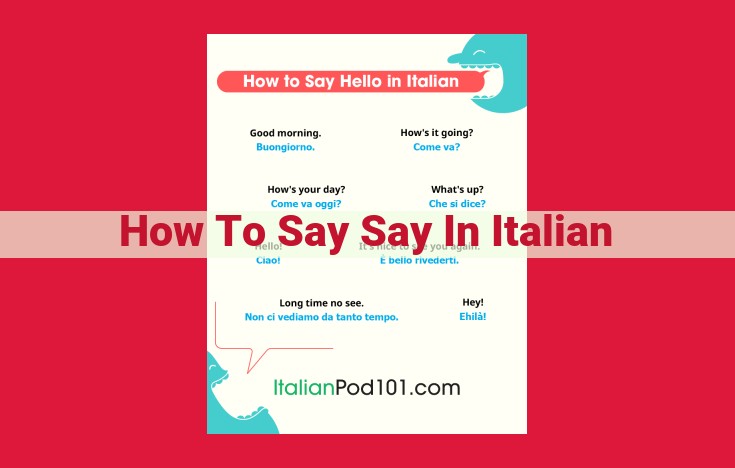Ciao in Italian is a versatile greeting used in various contexts. It’s employed as a casual hello or goodbye among friends and acquaintances, making it a common and convenient way of communicating in Italian daily interactions.
Essential Italian Greetings for Every Occasion
When you embark on an adventure to the enchanting land of Italy, mastering a few essential greetings is not just a linguistic necessity but a key to unlocking the warmth and hospitality of its people. Let’s dive right into the world of “Ciao”s and “Arrivederci”s, and learn how to say hello and goodbye with Italian flair.
Morning, Noon, and Night: Greetings for Every Hour
- Ciao: The universal all-rounder, “Ciao” is an informal greeting that can be used anytime, anywhere.
- Salve: A more formal option, “Salve” is suitable for more respectful situations or when addressing strangers.
- Buongiorno: Literally meaning “good day,” “Buongiorno” is the go-to greeting from dawn till noon.
- Buonasera: As the sun starts to set, “Buonasera” becomes the appropriate greeting until evening falls.
- Buonanotte: When it’s time to turn in, wish others a restful night with “Buonanotte.”
Saying Goodbye with Grace and Politesse
- Arrivederci: A classic way to bid farewell, “Arrivederci” literally means “until we meet again.”
- A presto: A more informal goodbye, “A presto” implies a near future reunion.
- Ci vediamo: “Ci vediamo” simply translates to “see you,” making it a versatile goodbye for any situation.
- A domani: If you’re certain you’ll meet the next day, use “A domani,” which means “until tomorrow.”
Polite Expressions
- Mi dispiace: Apologizing politely
- Prego: Offering assistance or permission politely
- Grazie: Expressing gratitude politely
Polite Expressions in Italian: Essential Phrases for Social Interactions
Learning polite expressions is crucial when interacting with others in a foreign language. In Italian, there are several key phrases that can help you communicate respectfully and make a positive impression. Here are three essential polite expressions that will enhance your Italian vocabulary:
Mi dispiace: Apologizing Politely
When you need to apologize for a mistake or inconvenience, it is important to do so in a polite manner. In Italian, the phrase “Mi dispiace” (pronounced “mee dee-spyah-chay”) is the most common way to apologize. It literally means “I am sorry,” and can be used in a variety of situations.
For example, if you accidentally bump into someone in a crowded market, you could say:
“Mi dispiace tanto! (I’m very sorry!)”
Prego: Offering Assistance or Permission Politely
When offering help or permission, it is important to use polite language to show that you are being respectful. In Italian, the phrase “Prego” (pronounced “pray-go”) is used to offer assistance or grant permission.
For instance, if someone asks you for directions, you could respond with:
“Prego, mi segua (Please follow me).”
Grazie: Expressing Gratitude Politely
Expressing gratitude is an important part of any social interaction. In Italian, the phrase “Grazie” (pronounced “grah-tsee-eh”) is the most common way to say thank you. It can be used in a variety of situations, from thanking a waiter for bringing your food to expressing appreciation for a thoughtful gift.
Here is an example of expressing gratitude to a friend for helping you with a project:
“Grazie di tutto il tuo aiuto (Thank you for all your help)!”
